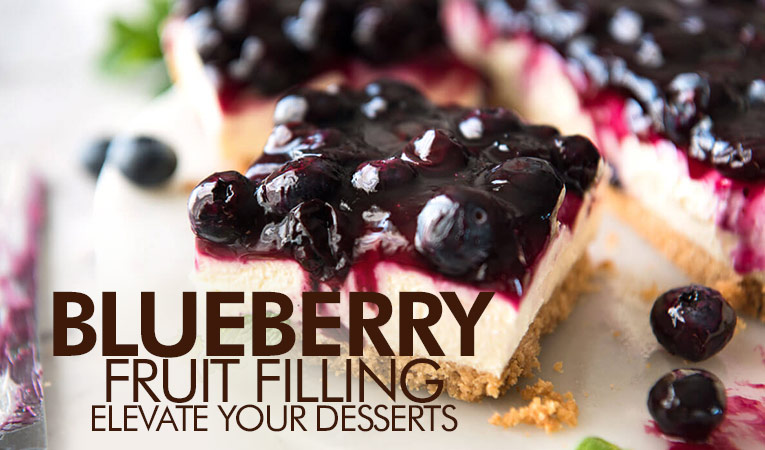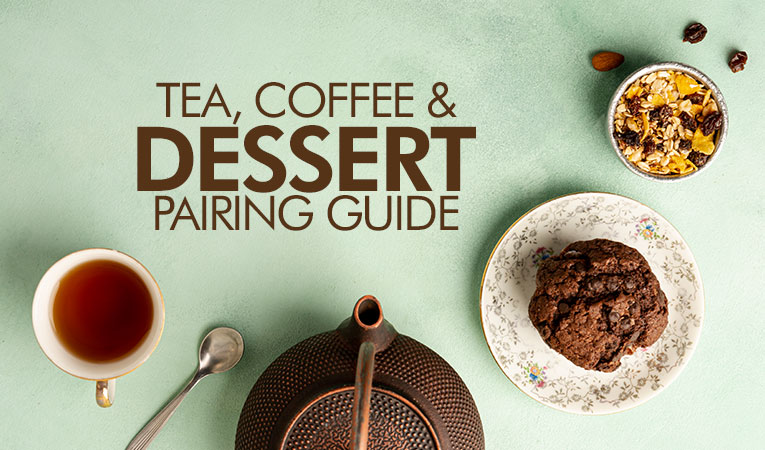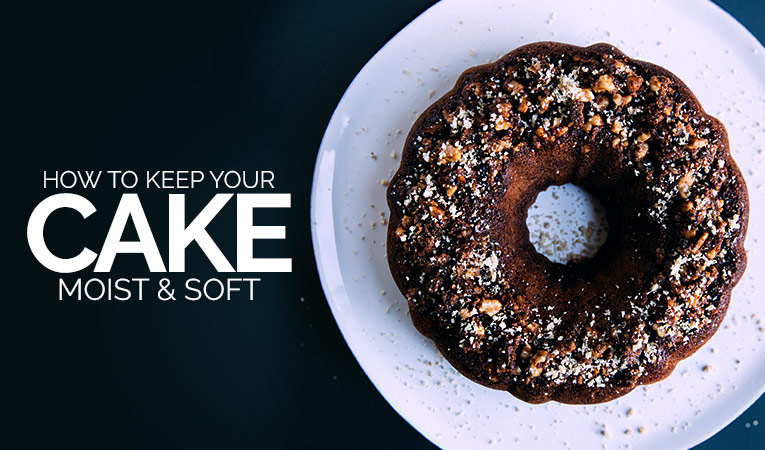Tips for Health-Conscious Baking with Delicious Flavors
03-09-2023

In the realm of baking, a delicious treat has long been synonymous with indulgence, often at the expense of health-conscious choices. However, in recent years, a culinary revolution has been quietly unfolding in kitchens around the world. Home bakers, fueled by a growing awareness of nutritional concerns, have embarked on a quest to strike a harmonious balance between flavor and wellness. This blog, titled "Tips for Health-Conscious Baking with Delicious Flavors," delves into this fascinating world where the joys of delectable treats merge seamlessly with nutritional considerations.
With an increasing interest in healthier lifestyles, baking enthusiasts are on a mission to create mouthwatering delights that not only tantalize the taste buds but also promote well-being. The notion of health-conscious baking has gained significant traction, driven by a desire to savor every bite without compromising on health. As bakers experiment with innovative ingredients, techniques, and recipes, they are uncovering the art of balancing flavor and nutrition, proving that you can indeed have your cake and eat it too.
In this blog, we will navigate the exciting terrain of health-conscious baking, offering valuable insights, tips, and strategies to achieve that perfect equilibrium between taste and wellness. Join us on this culinary adventure, where we explore creative ways to infuse robust flavors into your favorite treats while keeping your nutritional goals intact.
Choosing Healthier Ingredients
Health-conscious baking begins with a thoughtful selection of ingredients. To strike that perfect balance between flavor and nutrition, you'll want to pay close attention to what goes into your recipes.
- Whole Grains: One of the cornerstones of health baking is the incorporation of whole grains. Swap out refined flours with their whole-grain counterparts. Whole wheat flour, oat flour, and almond flour bring a hearty, nutty flavor profile to your baked goods while adding fiber, vitamins, and minerals.
- Reducing Sugar: Sugar is the classic culprit when it comes to unnecessary calories. But you don't have to sacrifice sweetness entirely. Opt for natural sweeteners like honey, maple syrup, or date paste to add a touch of sweetness while introducing extra nutrients. Alternatively, try reducing the sugar content in your recipes. Often, you can cut back without compromising on flavor.
- Healthy Fats: Fats are essential for texture and mouthfeel in baked goods. However, selecting healthier fats can elevate the nutritional profile of your creations. Avocado, coconut oil, and nut butters are excellent alternatives to saturated fats like butter. These options contribute beneficial monounsaturated fats and a unique flavor that pairs wonderfully with various baked treats.
By thoughtfully choosing ingredients, health-conscious bakers can maintain the integrity of their recipes while infusing them with enhanced nutritional value. Whole grains, reduced sugar, and healthier fats are key components of this culinary strategy, offering a delightful compromise between delicious flavors and dietary wellness. As we delve deeper into the art of health-conscious baking, we'll explore additional techniques and tips for balancing the scales between wholesome indulgence and nutrition.
Creative Flavor Enhancements
In health-conscious baking, flavor enhancement plays a pivotal role in ensuring your treats are not just nutritious but also utterly delicious. Fortunately, there's a treasure trove of natural flavor boosters that can elevate your baked goods without adding excessive calories or sugar.
- Spices: Spices are the secret weapons of health-conscious bakers. Cinnamon, nutmeg, cardamom, and ginger can impart warmth and depth to your creations. These aromatic spices not only intensify the flavor but also offer various health benefits, from improved digestion to anti-inflammatory properties.
- Herbs: Don't limit herbs to your savory dishes; they can also infuse your sweet treats with intriguing tastes. Fresh mint, basil, or lavender can be expertly incorporated into cakes, cookies, and even ice creams. These herbs provide a burst of freshness and complexity that can surprise and delight your taste buds.
- Natural Extracts: Extracts derived from vanilla, almond, or citrus fruits are a staple in many dessert recipes. Choose high-quality, pure extracts without added sugars or artificial flavors. Just a few drops can make a significant difference in flavor, allowing you to cut back on other sweeteners.
- Fruit Zest: Citrus zest, from oranges, lemons, or limes, can brighten up your baked goods with a burst of tangy freshness. The zest contains aromatic oils that add depth and complexity to your treats without the need for extra sugar.
By embracing these creative flavor enhancements, you can master the art of health-conscious baking while ensuring your creations are a feast for the senses. These natural ingredients not only elevate taste profiles but also introduce an array of health benefits, making your culinary endeavors both nutritious and scrumptious.
Secrets of Sugar Reduction
In the quest for health-conscious baking, sugar substituion is a pivotal challenge. It's not just about cutting back on sweetness; it's about achieving a balance that preserves the delightful flavors in your treats. Luckily, there are several strategies and alternatives that can help you master this sweet science.
- Natural Sweeteners: Nature provides a palette of natural sweeteners like honey, maple syrup, and agave nectar. These alternatives bring their unique flavors and depth to your recipes. They're often sweeter than sugar, so you can use less while still achieving the desired sweetness. Be sure to adjust liquid ratios and baking times when incorporating these natural sweeteners.
- Stevia and Monk Fruit: Extracts from stevia leaves and monk fruit offer sweetness without calories. These sugar substitutes are significantly sweeter than sugar, so a little goes a long way. However, their unique taste can take some getting used to, and they might not work perfectly in every recipe.
- Fruit Purees: Mashed bananas, unsweetened applesauce, or pureed dates can lend natural sweetness and moisture to your baked goods. They're excellent choices for sweetening without relying solely on sugar. Keep in mind that they can impart their flavors, so choose fruits that complement your recipe.
- Gradual Reduction: Another approach is to gradually reduce the amount of sugar in your recipes. Your taste buds can adapt over time, so what might seem too sweet now could be just right with a little less sugar. Start by reducing the sugar content by a quarter, and see how it affects your recipe's taste and texture.
- Flavor Synergy: Balancing flavors can also reduce the perception of sweetness. Combining ingredients like cinnamon, nutmeg, or vanilla can create complexity that distracts from the reduced sugar content.
Health freak baking is all about finding the sweet spot between flavor and nutrition. Experimenting with these strategies and alternatives can lead to delightful discoveries in your baking journey, allowing you to savor the best of both worlds.
Balancing Texture and Taste
In health-conscious baking, achieving the perfect balance between texture and taste is an art worth mastering. Ingredient substitutions can significantly impact both aspects of your baked goods, but with the right knowledge and techniques, you can create treats that are both nutritious and delicious.
- Whole Grains: Incorporating whole grains like whole wheat flour, oats, or quinoa can add a hearty texture to your baked goods. These grains bring robust flavors that complement ingredients like honey, cinnamon, or nutmeg. However, their increased fiber content can also make the final product denser. To maintain a light texture, consider using a blend of whole grains and all-purpose flour or using whole grain pastry flour.
- Fats and Oils: Replacing traditional butter or margarine with healthier fats like avocado or coconut oil can impact both texture and taste. Avocado, for example, adds a creamy texture and a subtle earthy flavor. Coconut oil brings a pleasant coconut aroma and a slightly nutty taste. When using these alternatives, it's essential to adjust the amounts to ensure the right texture and flavor balance. Coconut oil, for instance, is solid at room temperature, so it may require melting before use.
- Protein Sources: Introducing alternative protein sources, such as Greek yogurt, can enhance both texture and taste in baked goods. Greek yogurt can add moisture and a tangy flavor that pairs well with fruits like blueberries or strawberries. Its creaminess can also contribute to a soft and tender texture. However, since Greek yogurt is more acidic than butter, you might need to adjust leavening agents like baking soda.
- Nuts and Seeds: Adding nuts or seeds can elevate the texture and taste of your baked creations. Almonds, for instance, bring a delightful crunch and a subtle nutty flavor. Chia seeds introduce a pleasing crunch and a hint of earthiness. To balance texture and taste, chop nuts finely for even distribution or use seeds as a topping for added crunch without altering the interior texture.
In healthy baking, every ingredient plays a crucial role in achieving the desired texture and taste. Experimentation, careful measurement, and a keen understanding of how substitutions affect your recipes will lead to baked goods that satisfy both your palate and your nutritional goals.
Tips for Healthier Frostings and Fillings
In health-conscious baking, creating delicious frostings and fillings that are lower in fat and dairy-free is both an art and a science. With a little creativity and the right ingredients, you can achieve the perfect balance between flavor and nutrition.
- Reduced-Fat Cream Cheese: For a creamy frosting with less fat, consider using reduced-fat cream cheese. It offers the same tangy flavor as regular cream cheese but with fewer calories and less saturated fat. Pair it with a natural sweetener like honey or maple syrup for a delicious and slightly tangy frosting. Adding a touch of vanilla extract enhances the overall flavor.
- Greek Yogurt: Greek yogurt is a versatile ingredient that works well in both frostings and fillings. It provides creaminess and a pleasant tang while adding a dose of protein. Mix Greek yogurt with powdered sugar and a splash of lemon juice for a refreshing citrus-flavored frosting. You can also combine it with mashed fruits like berries or mango for fruity and creamy fillings.
- Coconut Milk: Full-fat coconut milk is an excellent dairy-free alternative for creating rich and creamy frostings and fillings. It adds a tropical flavor that pairs wonderfully with ingredients like cocoa powder or grated citrus zest. To create a dairy-free chocolate frosting, mix coconut milk with dark cocoa powder and a sweetener of your choice. It yields a velvety frosting with a delightful coconut undertone.
- Avocado: Avocado is a fantastic substitute for butter in creamy fillings and frostings. Its creamy texture and mild flavor make it a versatile option. To create an avocado-based chocolate frosting, blend ripe avocado with cocoa powder, a sweetener, and a pinch of salt. The result is a luscious, creamy frosting that's both nutritious and decadent.
- Whipped Aquafaba: Aquafaba, the liquid from canned chickpeas, can be whipped into a fluffy, dairy-free alternative to whipped cream. Sweeten it with powdered sugar and a touch of vanilla extract for a delightful whipped topping. You can also use it as a light and airy filling for cakes and pastries.
In healthy baking, flavorful frostings and fillings don't have to be laden with excess fat or dairy. By exploring these creative alternatives, you can enjoy the taste and texture you love while making more nutritious choices for your baked treats.
Conclusion
As we wrap up our journey into health-conscious baking, it's clear that the delightful marriage of flavor and nutrition is not only possible but immensely satisfying. Balancing the two is akin to mastering a craft – it takes a bit of practice, some experimentation, and a dash of culinary creativity.
In our pursuit of healthier baking, we've explored various aspects – from ingredient choices that favor whole grains to creative flavor enhancements using spices and herbs. We've uncovered the secrets of sugar reduction and learned how to balance texture and taste with ingredient substitutions. Finally, we've ventured into the world of healthier frostings and fillings, discovering that creamy and delicious can also be light and nutritious.
The key takeaway is that healthly baking need not sacrifice flavor. It's about making thoughtful choices and finding alternatives that enhance both the nutritional profile and taste of your baked goods. It's an art where you can be both the artist and the beneficiary of your creations.
So, dear bakers, I encourage you to embark on your health-conscious baking adventures with enthusiasm. Try out these tips, experiment with new ingredients, and share your culinary experiences. After all, the sweetest part of baking is not just in the indulgence but in the joy of creating something that nourishes both body and soul. Happy, healthy baking!





